There are millions of ties out there and every year, millions more are added but only very few are of such good quality that are your worth your money. A tie is only as good as what goes into it and there are five things that make a quality tie. The Shell, the interlining, the stitching, the thread and the tip lining.
The Tie Shell
The Shell is the outside of the tie. It’s the material you hold in your hand. Basically, most quality ties are cut in three pieces.Sometimes makers advertise that they only cut their entire tie from one piece of Silk or wool and that doesn’t add anything to the quality of a tie.
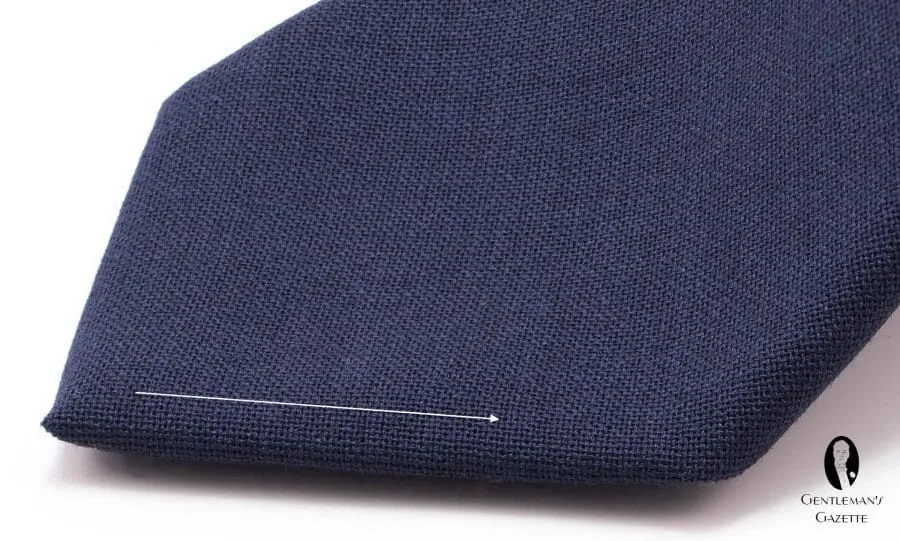
Cut on the Bias
What’s really important is that your tie is cut 45 degrees on the bias because otherwise, your tie will twist unfavorably and not hang straight and drape very poorly. What I mean by that is that the tie will twist constantly and that will not look good when you wear it.
In order to figure out whether your tie was cut on the bias, you should use a stretch test. The stretch test has two hallmarks, one is to pull the length of the tie and it has to stretch that way. The other is you have to pull at 45 degree angle of the tie and it must not move at all. If you have these two factors in your tie, it was cut on the bias and has good quality. If it’s not, skip the tie, don’t buy it.
A reason why some companies will not cut their ties on the bias is because they can get more ties out of the same amount of fabric than if you cut them on the bias.
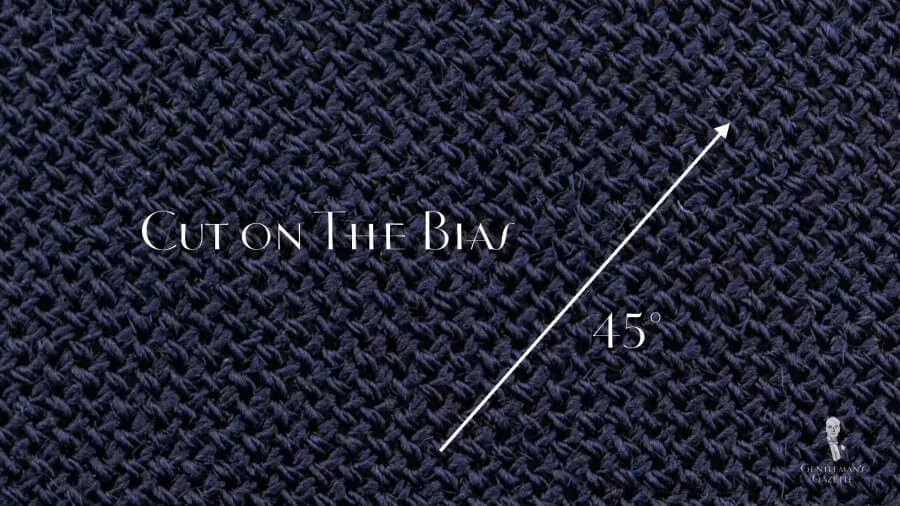
100% Silk Never Actually Means 100%
When you read the label on a tie usually they say 100% silk or 100% wool. That only refers to the outer shell. What you always have to keep in mind is that silk doesn’t equal silk just like cotton doesn’t equal cotton.
Not All Silk Is Created Equal
Most of the silk nowadays,comes as the raw material from China however, the processing of the silk is hugely different. Silk is a very thin material, it has to be spun into yarns the right way with the different raw materials so it has the right thickness and it has to be woven with a jacquard loom or print. Quality silks from Italy or from England can be 15-20 times as expensive as the same amount of the same weight of silk from China. At Fort Belvedere, we only use highest quality silks from the best printers and weavers in the world that also means our base cost is much higher than other ties you buy somewhere on the street for five or twenty dollars. For our Silk ties, all that’s from China is the raw material of the silk and all the processes; the dyeing, the spinning, the weaving all of that is in Italy and in England. Simply because it provides better quality products.
Traditional Ties Are Made with a 3-Fold Construction
The traditional way to cut a tie is the so called three fold tie. It’s called that way because a tie is folded three times basically, one on the inside, second one over and over again so you get a closed seam on the edge. In recent years, the term seven fold has become more popular and is often used as a quality hallmark however it is not. All seven fold means is that your tie was folded seven times and it doesn’t have an interlining so it’s all silk that means your tie was produced in a more wasteful way. Not only that, in my personal opinion, the hand and knot of a seven fold tie is just not as beautiful as the one of a three fold tie with an interlining.
7-Fold Ties Are Not Per Se Better, Just More Wasteful
A lot of people have come up with different ties, four fold ties, five fold ties, seven fold, 8 fold, nine fold, six fold you name it. In my opinion this development is rather ridiculous, it reminds of me the razors. Gillette with three blades, four blades, five blades when in fact the best shave you get with a single double edge blade of high quality. So don’t let the number of folds fool you, if you choose a cheaper silk and the knot doesn’t look good, it doesn’t matter how many folds your tie has, what matters is the look and the feel and the quality of the materials used.
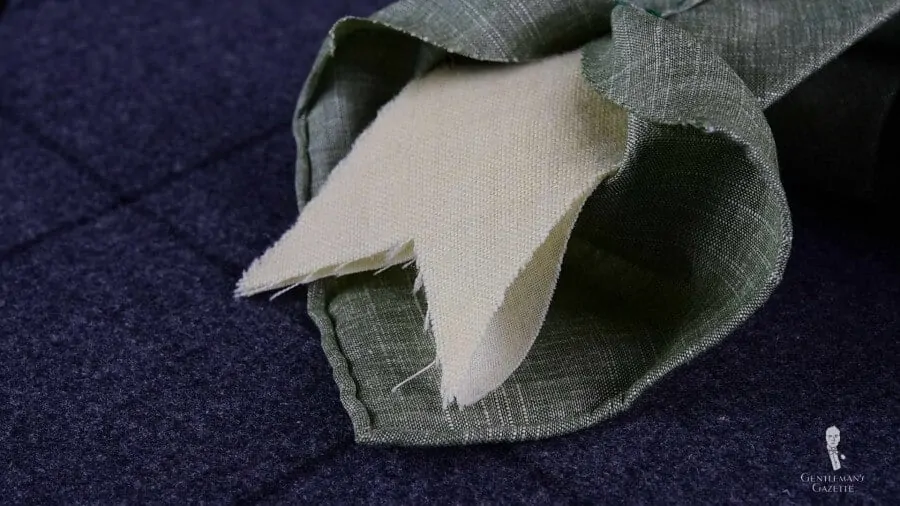
Tie Interlining Is Very Important
The Interlining of a tie is very very important because it helps a tie to drape and oftentimes it’s completely neglected. That’s obvious because on a label, usually only talks about the material of the outer shell, it never even mentions the interlining. Therefore, most ties contain cheap polyester based interlinings that are thick and so people think a thick tie stands for quality however that’s not true.
Thickness Is Not A Hallmark of Quality
The thickness of the tie oftentimes just comes from the cheap polyester interlining and it’s just too stiff and you cannot really tie a nice knot and a nice dimple with it. The best interlining you can have for a tie is natural materials such as wool and cotton. Every outer shell material is different, silk is not silk it has different thickness, it has a different texture and so you have to find the right interlining for the right tie.
At Fort Belvedere, we really pay a lot of attention to pairing the right shell with the right interlining so you get the best knot possible. All the interlinings at Fort Belvedere ties come from Italy and they are the highest quality interlinings you can find for ties in the world. We even go so far as to pay a lot of attention to the way it’s cut so for an untipped tie, it gives it a nice fall we don’t just cut it straight we cut it in a nice 45 degree angle. For example for this thick wool angora tie which shows a very thin interlining otherwise your tie knot would have been way too big. What’s important in terms of workmanship with interlining is that it’s sewn to the tie so it cannot shift around.
The way to test that is simply to touch the tie in the interlining and move it around and if you let it go it should all fall back and the tie should still look nice just the way it did before. On a poor quality tie, the lining will shift and will be off centered and your tie will look terrible and you will not enjoy this kind of tie so if the interlining is not good, if it’s cheap, if it’s very thick usually leave the ties aside because it means it’s not quality
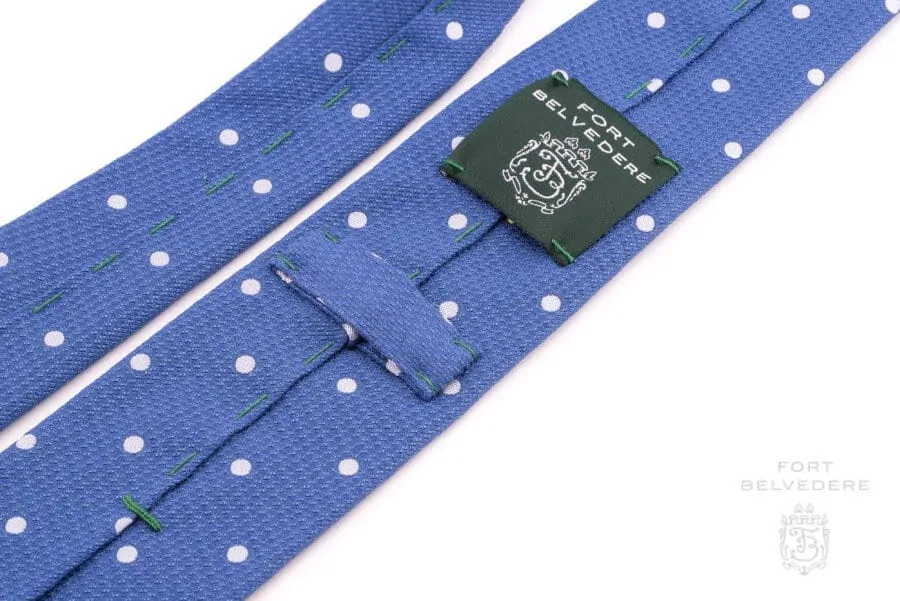
Handsewn Ties Are Better
Most ties today are machine made. There is a special machine called Liba machine and all you have to do is put in your tie, close it up and it sews the tie up in seconds. Even though the Liba machine is very time efficient, it’s not the best quality way to stitch your tie because the stitch is too inflexible, it doesn’t have enough room.
The tie is three dimensional when it drapes with your knot it needs room to stretch and be flexible therefore your stitch must be loose and must have room to give when you untie your tie or tie a tie knot otherwise the thread will rip and ruin the tie. Sometimes also it can shift the material if there’s not enough room. A high quality tie is always hand sewn with a tie tack.
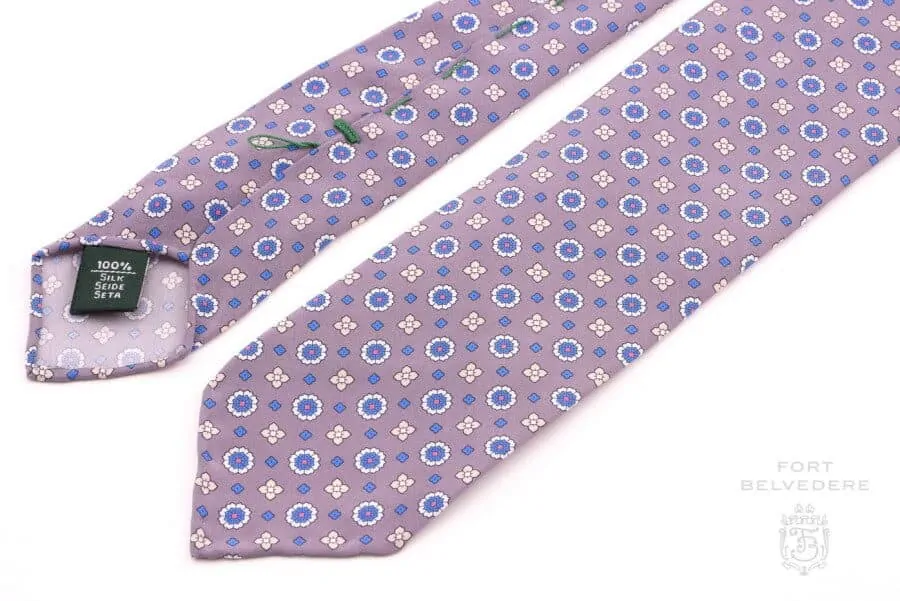
Loop Stitch & Straight Stitch
Basically, you can find two ways to stitch a high quality tie. One, is the so called loop stitch because it shows a loop at the end. One end going back to the other end leaving an additional reserve for the thread so the tie can stretch without ripping the thread.
The other way to sew a tie is to simply have a thread and a knot at the end and to leave a reserve of the thread. In my opinion the loops are just slightly better. At the end of the day what really counts is the flexibility and you get that with the stitch as well. The only problem is that the knot is not big enough, you can pull it through the hole and the tie can come undone or even worse, it rips.
Pay Attention To The Thread
The thread is important because it holds the tie together and the stronger your thread the longer your tie will last. Most ties are sewn together in a way you don’t see it. At Fort Belvedere, we decided to use our signature green 3-ply silk thread from Germany to keep the tie together. This is a really strong quality thread and we also use it for our tags which are hand sewn at the end they connect the interlining to the shell so everything stays in place and nothing moves around.
Most companies use a thinner thread that rips more easily so you either have to bring it to your alterations tailor try to have it fixed which can be difficult because they do not know how to do it and then the tie’s inflexible anymore and it’s simply not great. So investing in a high quality thread is more expensive but we think is worth it.
Looking at ties, you can always just look at the thread and you can look at the stitch density. The higher the stitch density, the better it is because it has more anchoring points so you get less pressure on an individual part of your thread. Other than that, you can just pull a little bit if it’s a poor quality tie it will rip but don’t pull too hard because otherwise the store will make you pay for it.
Whether you have the thread showing on the outside or hidden on the inside, there’s no difference in quality. It’s more decorative that’s all.
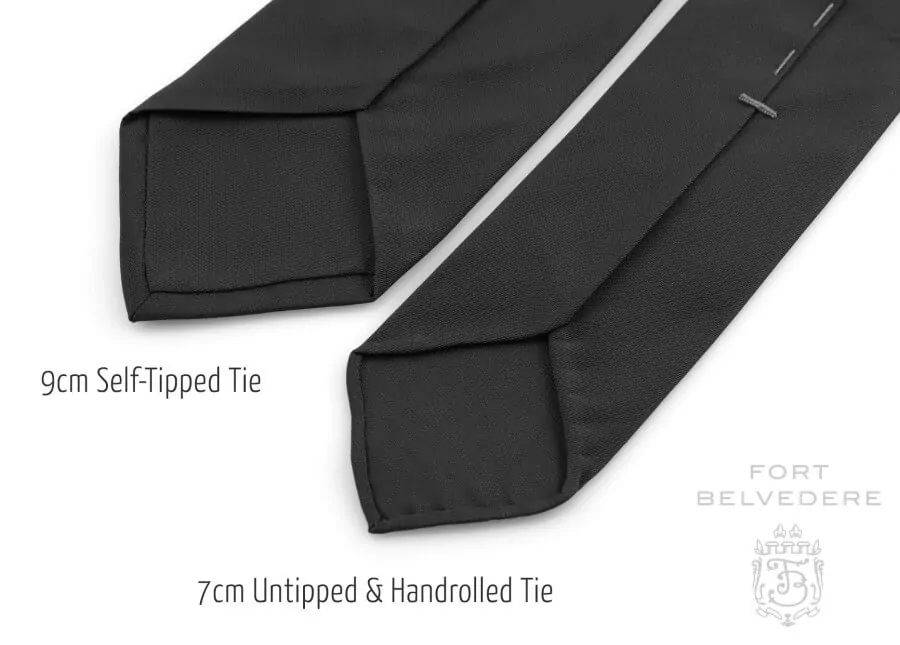
Tipped, Self Tipped or Untipped
Basically, you can have a lined or unlined tie. Here, we have a tip lining which is a separate fabric and many companies use cheap polyester tip lining because it’s less expensive and it’s a way to save material. Most ties nowadays have a tip lining to simply cover up their interlining which is oftentimes very thick and of poor quality.
So if your tie is untipped, you can actually really see what’s going on inside and untipped ties were the standard in the 1930s. So at Fort Belvedere, we offer some ties untipped with hand rolled edges which takes much more time. It’s also means the tip is thinner because you simply have the outer shell fabric without the extra layer of interlining. It takes more time and skill to have an untipped tie than a tipped tie but in either case we only use top quality materials which is either the same silk as we use for the outer shell or we use hand rolling which requires a lot of skill.
If you like a heavier tip, I always suggest that you get a tipped tie because an untipped tie is simply thinner. Some people say it’s flimsy in my opinion it’s more airy and a little lighter and especially great for spring summer seasons.
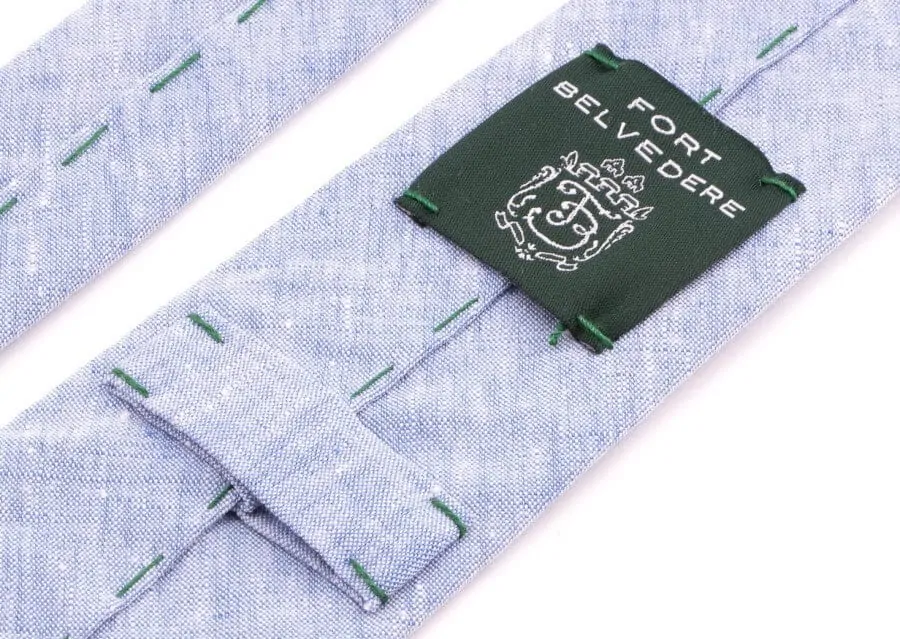
The Keeper Does Not Matter
One thing that’s really not a hallmark of a quality tie is the so called keeper. The keeper is that little piece of fabric at the back of your tie that was made so you can actually put the slimmer end of the tie through to keep it in place. Personally, I think you should never use the keeper, I’d much rather have both ends dangling because you’ll have more non chalant, more elegant look. Nevertheless, some people like them. So we have them in our Fort Belvedere ties. If you like to put your slimmer end through the keeper of course you need one otherwise, don’t worry about it, it’s not a quality hallmark.
Another reason not to use a keeper is so you can actually see both ends of the tie.That’s particularly nice if you’re tie has a lot of handwork, just decorative stitching or hand rolling so you can clearly see it.Now that you know the quality hallmarks of the tie, I want to show you how you ensure that your ties last as long as possible.
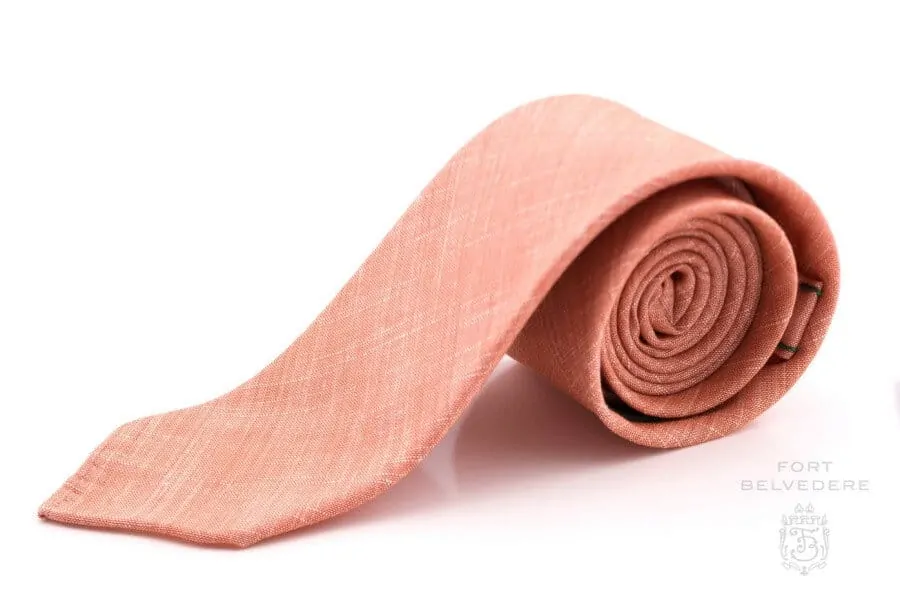
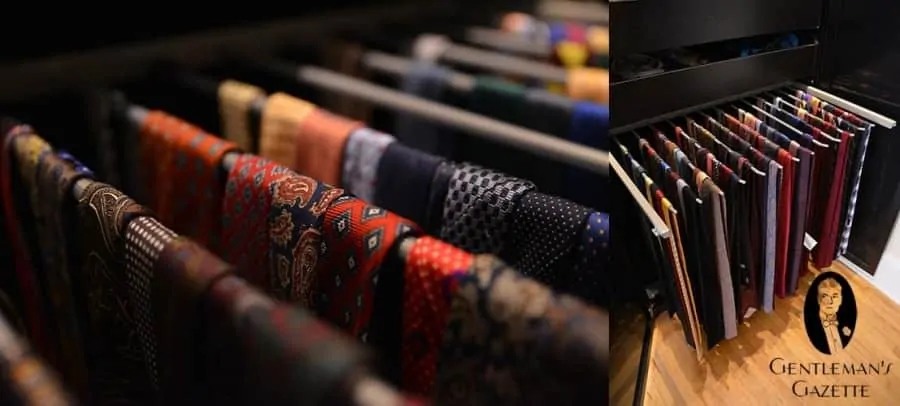
How To Store Your Tie The Right Way
The proper way to store your classic three fold, five fold, six fold, seven fold, whatever fold tie is to roll it up once you’ve worn it. That will help to reduce wrinkles in the are if your knot and you store it like this for about 24 hours and then afterwards, you simply just hang it on a rack. I would not recommend keeping your tie rolled up for more than a day because otherwise when you want to wear it and you’ve had it in your drawer for five weeks, it will curve and not hang properly.
That’s why you should always store in your rack. If you’re interested in knit ties, please watch our specific knit tie video and if you want to learn more about classic men’s clothing and style and how to combine your ties, please sign up for our free ebook, Gentleman of Style.We’ll help you to do just that.
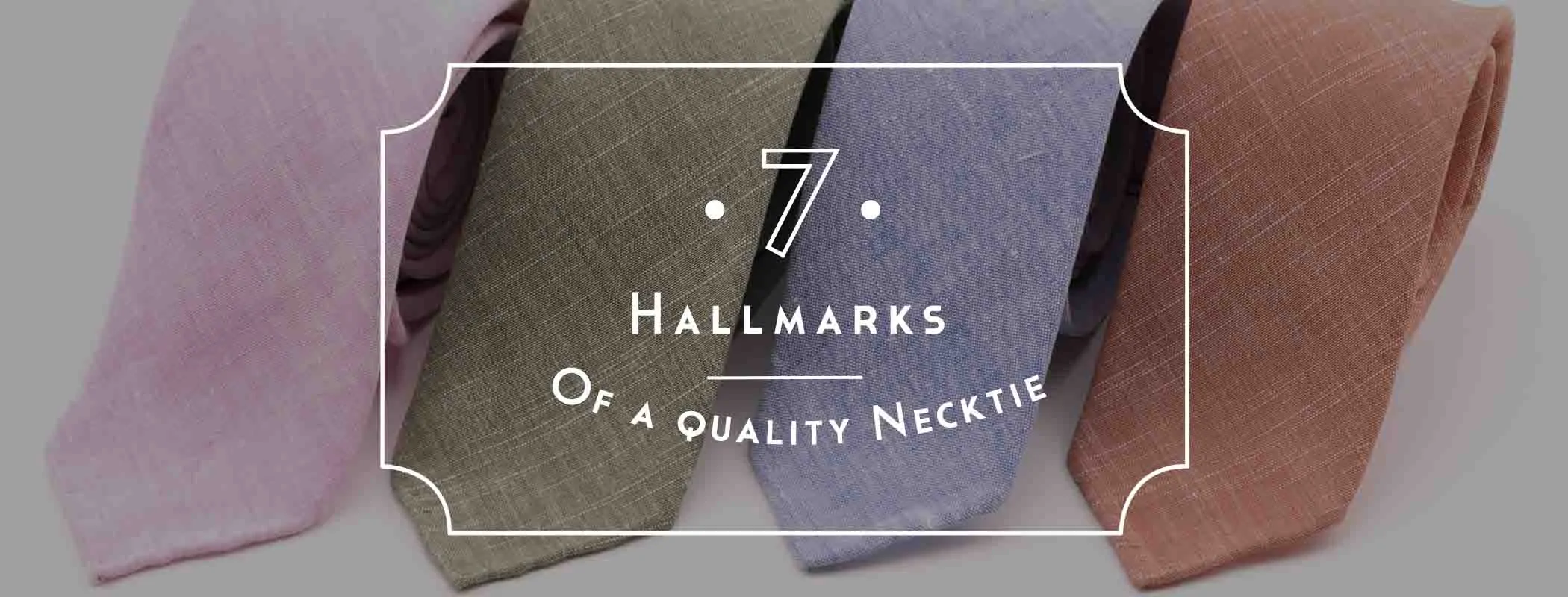
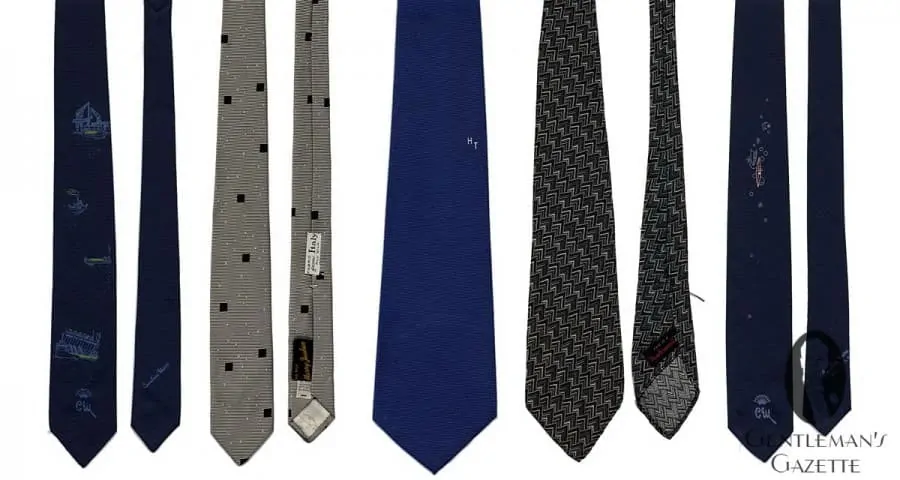
I agree with you 90%. If you are an active guy (that dresses in suit and tie). The keeper is a must, otherwise the tie hags ad libitum outside the jacket, and looks, well, messy. When you go to a passive event (cocktail, concert, etc) and you mostly will stand still or sit, then I agree.
Good evening… any suggestions on tie racks? They can be hard to find and often are not of the highest quality. Good and interesting article on ties. Thank you! Cheers. Dan Soller
How much space do you have available? How many ties do you have?
When it comes to ties, I have tried fairly good ones and fairly inexpensive ones. I even have one of yours (Fort Belvedere). A lot of my ties come from a bar-tie place that sells ties for $15/19 each and they are nice enough. If I’m wearing a three-piece, there is little tie showing and so a knot with a dimple is all that is required. When I recently asked my tailor about getting some ties for my new suit, he agreed on the bar as a good source. No doubt, Drakes, Zegna, Robert Talbott and many others have attracted my eye but the prices are steep and the patterns seem much the same. The construction of the tie alone is not enough to get me to spend ten (or more) times more. But I would spend more for a specific pattern or color I wanted. I like bolder patterns from the ’30s and 40’s which are hard to find. (Are you listening Raphael?) The Fort Belvedere I own is quite unique, which is why I was willing to spend more for it.
I totally understand. We have new unusual ties coming shortly, and we always try to offer colors and ties not easily or not at all available otherwise.
In my experience, tailors often have very poor taste themselves and their understanding of ties, bow ties and etiquette is not something I would ever rely on.
Another good article. And we remain very impressed that you understand these things; because some clothiers, of whom you might have wished to think better, do not.
Stitching is indeed extremely important. Slip Stitching (with loop) may be laborious – but that’s how you arrive at a properly made Tie. Without this, each knot will strain and mishapen the material. On a cheaper, machine made Tie, you can see where the knot was tied after only a few wears, whereas on a slip stitched Tie you will not.
The content of this tie video presentation is top flight. I finally know how to buy a great tie.
However the b.g. music is competing with you for a viewer’s attention. In short, the cute, bouncy music is annoying; it doesn’t fit the product or your personal presentation. Find smoother music. I watched your other video’s and their b.g. music has always complimented the visuals.
Thanks for the info on ties as well as all the other categories you’ve presented.
Thanks for the feedback. The other videos were shot the same way and had the same music… Maybe it just felt that way because it was a longer video.
I found the segment on the tie keeper interesting.
Before World War II, I don’t recall any manufactures producing them.
But since you have them on your tie for customer satisfaction, I will tell you that the tie keeper is done very well. When it is tucked into the tie like that it holds in place very well.
As for the interlining, that is what really is the ‘soul’ of any good tie.
I’m surprised that over the years, with many different articles and books produced about neckwear, that the lining hasn’t been mentioned.
Well done article and video.